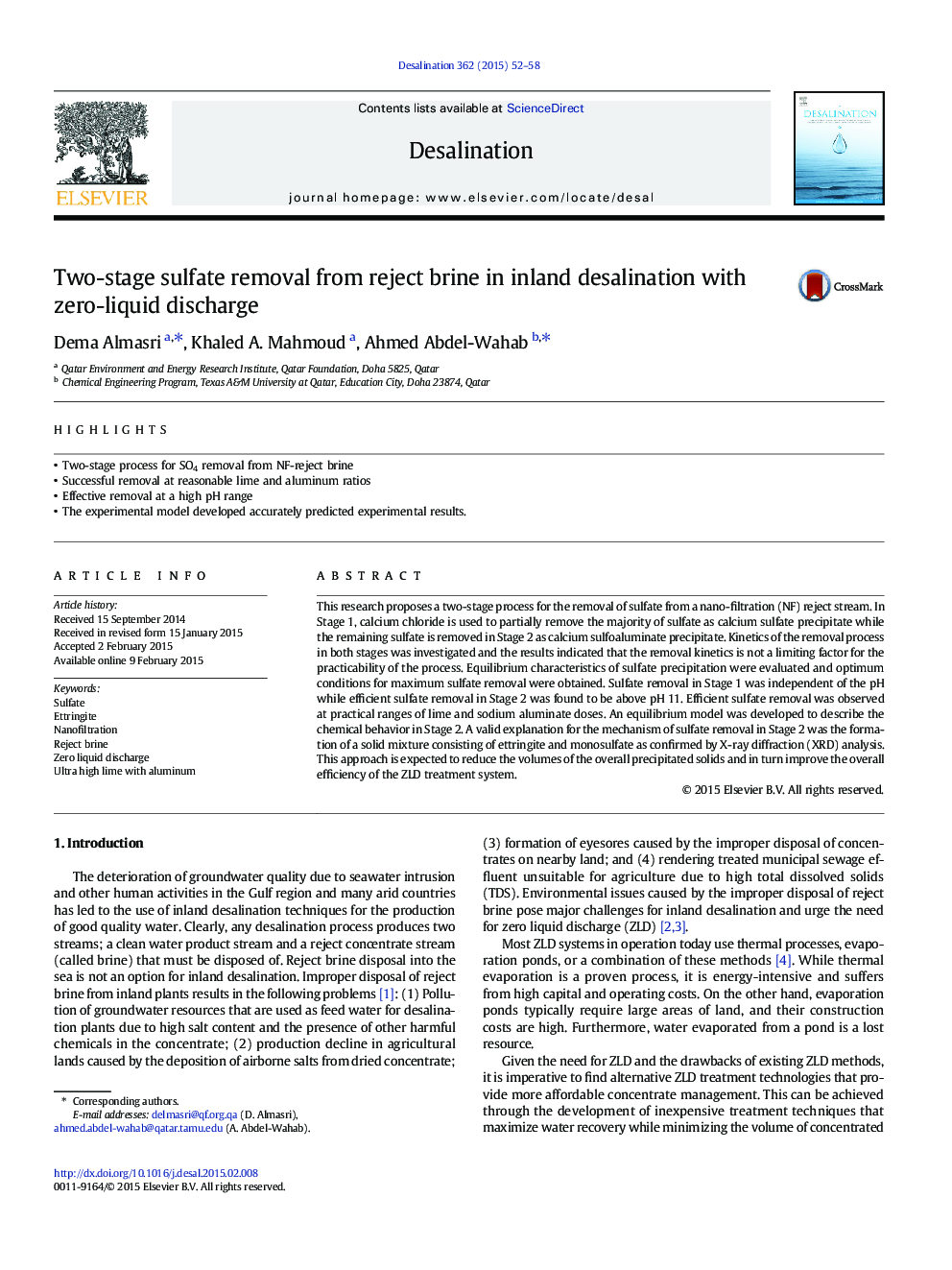| Article ID | Journal | Published Year | Pages | File Type |
|---|---|---|---|---|
| 623253 | Desalination | 2015 | 7 Pages |
•Two-stage process for SO4 removal from NF-reject brine•Successful removal at reasonable lime and aluminum ratios•Effective removal at a high pH range•The experimental model developed accurately predicted experimental results.
This research proposes a two-stage process for the removal of sulfate from a nano-filtration (NF) reject stream. In Stage 1, calcium chloride is used to partially remove the majority of sulfate as calcium sulfate precipitate while the remaining sulfate is removed in Stage 2 as calcium sulfoaluminate precipitate. Kinetics of the removal process in both stages was investigated and the results indicated that the removal kinetics is not a limiting factor for the practicability of the process. Equilibrium characteristics of sulfate precipitation were evaluated and optimum conditions for maximum sulfate removal were obtained. Sulfate removal in Stage 1 was independent of the pH while efficient sulfate removal in Stage 2 was found to be above pH 11. Efficient sulfate removal was observed at practical ranges of lime and sodium aluminate doses. An equilibrium model was developed to describe the chemical behavior in Stage 2. A valid explanation for the mechanism of sulfate removal in Stage 2 was the formation of a solid mixture consisting of ettringite and monosulfate as confirmed by X-ray diffraction (XRD) analysis. This approach is expected to reduce the volumes of the overall precipitated solids and in turn improve the overall efficiency of the ZLD treatment system.
